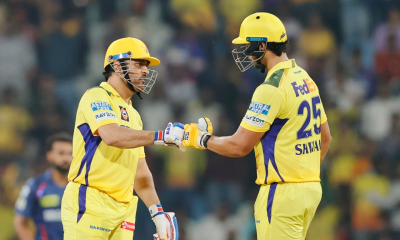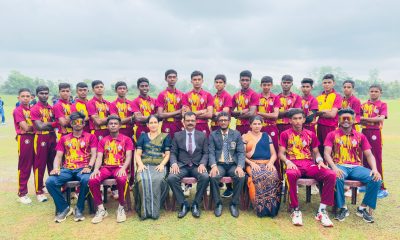Sports
Cracking the Avishka Fernando code

by Rex Clementine
Cabinet Minister Bandula Gunawaradene once said that Rs. 2500 is sufficient for a person to live a month. The argument did not go down well with the public. This is what happens when successful tuition masters try their hand in guiding the national economy. On the same note, it is a tricky subject for not so successful cricket writers to give suggestions on how the national cricket team should function. Nevertheless, it is good to be an armchair critic once in a while as long as you don’t get your calculations totally wrong like Bandula sir.
So, we have been sold this theory that Avishka Fernando has a chink in his armour opening the innings and that he is better off playing at number four. With gents like Mickey Arthur and Mahela Jayawardene being the theorists, the press took the bait, hook, line and sinker. Well, the two gents were asked to explain their theories. They played their cards close to their chests. Apparently, they did not want to let the cat out of the bag. Fair enough.
The closest it came to was that during Power Plays with field restrictions on and the inner circle cramped, Avishka struggled to find the gap and rotate the strike.
Some did not buy into that theory. Jaffna Kings, Avishka’s franchise owners certainty didn’t. They batted him at his usual position and the Moratuwaite came up with a stunning display hitting five consecutive sixes in an over this week. The bowler at the receiving end was T.M. Sampath, the younger brother of former captain T.M. Dilshan.
Avishka has always batted top of the order. He is so exciting to watch and there’s little doubt that he’s Aravinda’s heir given the time he has got to play his strokes and the natural flair. If it is true that why Sri Lanka wanted him to go down the order was because he was struggling to rotate the strike when field restrictions were on, it is defensive thinking, some could argue. We are a nation that got hold of not just one opener but two of them and told them to go helter-skelter upsetting the bowlers’ rhythm. Why can we not do the same with Avishka? Fair question.
You can not criticize Avishka’s demotion altogether for that tactic allowed Pathum Nissanka to move up the order and how well he has performed there. Sri Lanka were desperately searching for someone to bat through the 20 overs, often getting bowled out without utilizing their quota of 20 overs. Pathum has solved that problem. He plays the anchor role so well and occasionally brings up Steve Smith like strokes that you can only sit back and marvel.
Over the years, in Sri Lankan cricket we have converted some of our finest talents as opening batsmen. They have all done terrific jobs top of the order. But to get an opening batsman to bat at in the middle order is almost unheard of. Also the theory that Avishka is fine to open batting in ODIs but not in T-20s doesn’t add up. One of Dav Whatmore’s theories was that your best players needed to ‘consume the larger amount of overs’ when it came to white ball cricket.
There’s some fault in Avishka too. He was going to make his Test debut early this year against England in Galle but was sent home having failed a fitness test. Apparently the Sri Lankan team manager at that time, former fast bowler Ashantha de Mel, had lower skinfolds than Avishka! A little bit of discipline, common sense and interest in what you are supposed to do can take you places. On the other hand, lack of intent will see your talent going down the drain and if you are not disciplined you have so much to lose.
Mickey Arthur’s fitness regime needs to be commended. No Sri Lankan coach has stressed on fitness as much as Mickey and his theory of ‘my way or the highway’ worked wonders. Mickey after all was someone who sacked Mitchell Johnson of all people for failing to do his ‘homework’. Taking on Avishka would have been child’s play for him. There is only one language that some players understand.
Coming back to the question whether Avishka should open or bat at four, it is an interesting debate. People like Mickey, who has coached four international teams and Mahela, who has turned everything he touched in coaching into gold need to be given the benefit of the doubt. But then, they taught us at school that only the Pope is infallible. Maybe MJ too when it comes to cricket.
Sports
Amin, bowlers leave West Indies Women’s World Cup hopes hanging by a thread
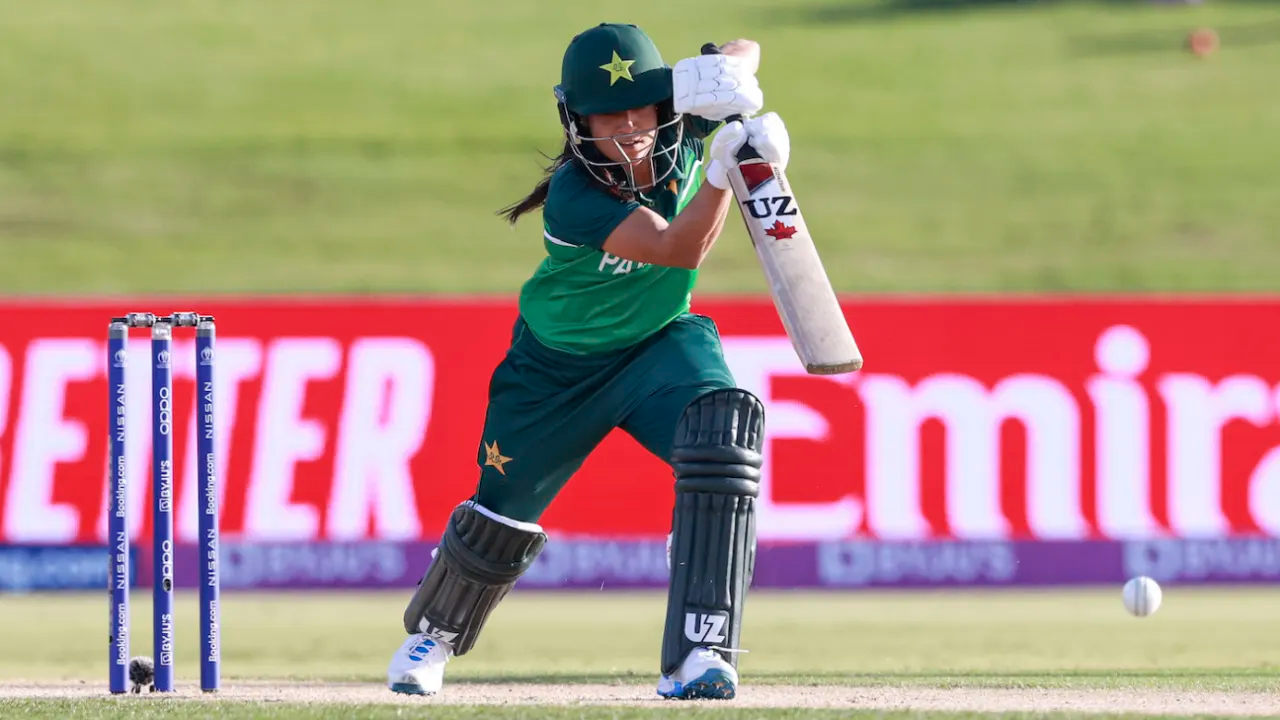
West Indies’ ODI World Cup hopes are hanging by a thread after they slumped to a second defeat in three matches in the qualifier in Lahore. They were beaten by 65 runs by hosts Pakistan, who have moved to the top of the points table, and are undefeated in the event so far as they remain on track for the Women’s World Cup.
Both teams, though, still have to play unbeaten Bangladesh and win-less Thailand. West Indies, meanwhile, have to win their remaining two matches, and hope other results go their way to help them get to the World Cup.
After bowling Pakistan out for 191, West Indies would have felt their bowlers had done most of the hard work against a line-up that continues to struggle to build partnerships and score quickly. Pakistan had no half-century stands – their highest was 47 runs for the second wicket between Muneeba Ali and Sidra Amin – and no one in their top five had a strike rate over 60. But a quality bowling attack and much improved fielding helped Pakistan defend what seemed a bowler-par total for the second time in the campaign.
Captain Fatima Sana led from the front, and after holding herself back until the 24th over against Scotland, took the new ball under lights in this game. Her first delivery was full and straight, and clipped the top of Hayley Matthews’ back pad. As a result, Sana had her opposite number out for a first-ball duck. Matthews looked disappointed with the decision, but with no reviews at the qualifier, she could only trudge off.
The experienced Shemaine Campbelle was sent out ahead of Zaida James at No. 3 but was run-out for the second time in the tournament. Campbelle tucked a delivery from Sadia Iqbal on the leg side, and set off for a single, but didn’t account for Sidra Nawaz’s speed. Keeping wicket in place of Muneeba, who has been left to focus on her batting, Nawaz charged off to field the ball, and her direct hit caught Campbelle out of her ground.
Three overs later, West Indies had another mishap. Diana Baig appealed for an lbw against Jannillea Glasgow as the ball bobbled to slip. Glasgow and James took the opportunity to steal a run, but Nawaz was quick to see them hesitate and called for the ball while the umpire was still deciding on the appeal. Nawaz ran James out to leave West Indies at 29 for 3, but with Stafanie Taylor still in the hut. Taylor had taken ill in the field, and could not come out to bat until an hour and a quarter into the innings, or until West Indies were five down, whichever came first.
That is why Chinelle Henry walked out to bat at No. 5, and joined Glasgow. Henry slapped the first ball she faced for four, and hit two more boundaries in her first seven balls.
Left-arm spinner Nashra Sandhu was brought on in the 12th over, and dismised Glasgow and Henry in the space of three balls to all but end West Indies’ hopes. They were 54 for 5 when Taylor walked in, before she shared a 34-run sixth wicket stand with Shabika Gajnabi. Taylor started to look threatening when she hit Rameen Shamim back over her head for six but was caught by Muneeba at short fine leg, and West Indies had no senior batters left.
Sana came back to take two late wickets, and finished with figures of 3 for 16. She is now joint-second on the tournament’s wicket-takers’ list, and just behind Matthews, who has ten wickets. That will be scant consolation to Matthews, who had Gull Feroza out early and took 2 for 30 in ten overs in this match, given the state West Indies find themselves in.
Though their bowling was tight, and only Karishma Ramharack conceded above five runs an over, their batting has let them down. After finishing World Cup 2022 as semi-finalists, they could miss out on the 2025 edition altogether after losses to Scotland and Pakistan.
West Indies have two days off before their next match against Bangladesh, and will want to use that time to address their batting concerns, including whether to bring Qiana Joseph back into the XI. Pakistan, too, will have some worries about their batting. Muneeba laboured to 33 off 60 balls, and Amin took 86 balls to get to fifty, but they anchored the innings.
No other batter scored more than Sidra Nawaz’s 23, and the middle order’s inconsistency is something they will want to address in coming games. Pakistan play Thailand on Thursday, and then play Bangladesh in their final game on Saturday.
Should Pakistan qualify for the World Cup, their matches will take place outside of India, in accordance with the hybrid model agreed on by the BCCI and PCB earlier this year.
Brief scores:
Pakistan Women 191 in 49.5 overs (Muneeba Ali 33, Sidra Amin 54, Aliya Riyaz 20, Sidra Nawaz 23; Hayley Matthews 2-30, Afy Fletcher 2-39, Karishma Ramharak 2-55) beat West Indies Women 126 in 39.2 overs (Aaliya Alleyne 22, Shabika Gajnabi 21; Fatima Sana 3-16, Rameen Shamim 2-26, Nashra Sandhu 2-31) by 65 runs
[Cricinfo]
Latest News
IPL 2025: Dhoni, Jadeja snap Chennai Super King’s losing streak
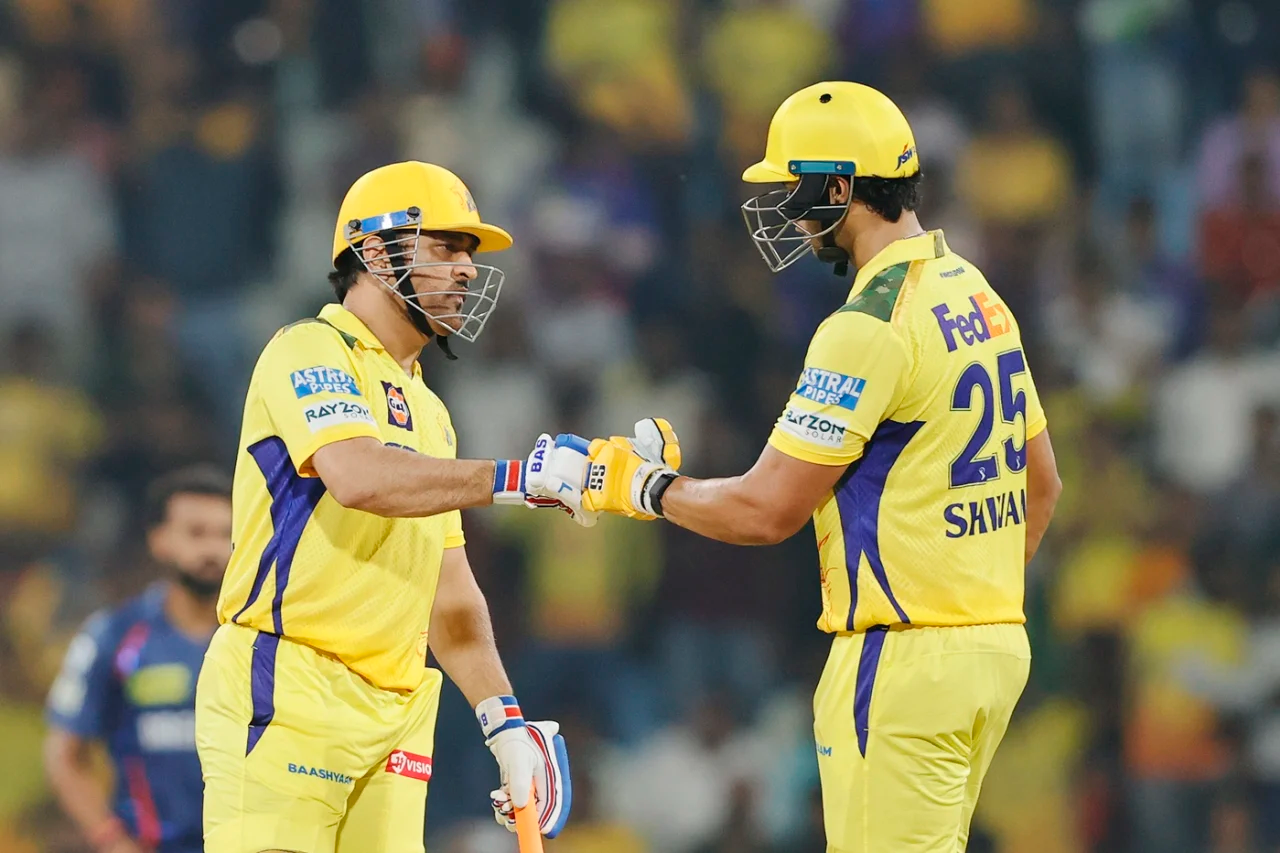
Chennai Super Kings (CSK) were staring at the prospect of losing a sixth game in a row when MS Dhoni joined Shivam Dube with five overs left in the chase. But Dhoni won the battle against the Lucknow Super Giants (LSG) seamers with an 11-ball 26 while Dube made 43 to give them their second win in seven outings.
LSG captain Rishabh Pant felt right after the game that LSG were “10-15 runs short” in their first-innings effort. Despite Pant’s own 49-ball 63, his first half-century in LSG colours, they scored only 166 for 7 in 20 overs, their lowest total of the season. They were pegged back by Ravindra Jadeja’s two wickets and kept in check by Noor Ahmed’s miserly four overs that went for only 13 runs.
After CSK’s opening partnership put them on course early, LSG dragged the game back with their spinners. Digvesh Rathi, Ravi Bishnoi and part-time offspinner Aiden Markram produced combined figures of 11-0-80-4, but a 19-run over from Shardul Thakur in the penultimate over ended LSG’s hopes.
When Dhoni walked in at the 15th over, Dube had made only 17 in his first 20 balls. Dube had failed to boss the spinners like his usual self and the dismissals of Vijay Shankar and Jadeja had only added to the pressure.
But Dhoni enjoys pace, coming into the game with a strike-rate of 222 against seamers since IPL 2024, and LSG supplied him with just that. Despite one over of Bishnoi left, LSG went for Avesh Khan and Shardul Thakur, and their wide yorker plan to both batters ended up being predictable.
Dhoni edged a couple of fours down to deep third but showed his power by punching a boundary through the covers, flicking a full toss over midwicket and dragging a one-handed six over deep square leg.
He also ran his ones and twos, sometimes gingerly, with Dube and took the pressure off him. When Shardul bowled two full tosses at the start of the 19th over, Dube smacked him for four and a no-ball six.
Dhoni picked up his first IPL player-of-the-match award since 2019 while Dube, soon after hitting the winning runs, said he was proud of taking the game deep. Their partnership of 57 came in only 28 balls.
Shaik Rasheed’s skills were never in doubt. He is a former Under-19 World Cup-winning vice-captain, has a Syed Mushtaq Ali century and a double ton in first-class cricket. It’s for those reasons CSK have kept a close eye on him since IPL 2023.
With Devon Conway not among the runs, CSK gave Rasheed an IPL debut and he took strike to start the chase. By the second over, he had pumped three fours off Akash Deep, with one flick over midwicket described on the broadcast as “Virat Kohli-like.”
His 19-ball 27 with six fours helped CSK reach fifty in only 4.2 overs, and alongside Rachin Ravindra’s 22-ball 37, gave them a rare successful opening stand. Those runs proved crucial as a collapse against spin soon followed.
With a strike-rate of 80 and a high score of 21 this season, Pant needed to get going. He walked-in in the fourth over with Markram and Nicholas Pooran out to Khaleel Ahmed and Anshul Kamboj cheaply.
He started on a positive note, improvising a reverse lap over third man early for six along with a handful of contorted pulls and cuts. But his strike-rate of 165 plummeted to 103 when CSK’s spinners applied the squeeze. Pant saw wickets fall from the other end, and ended up playing ten dots in 15 balls against Noor, scoring only six runs. His strike rate of 40 against the purple-cap holder ended up being the second worst for any batter against a bowler in IPL (minimum15 balls).
However, from 40 in 39 balls, Pant found his touch against the pace-on options of Matheesha Pathirana and Khaleel to turn his innings around. He couldn’t stay till the end, though, and the CSK spinners’ effort ensured LSG could make only 166 on a day where their second-highest individual score was Mitchell Marsh’s 30.
Brief scores:
Chennai Super Kings 168 for 5 in 19.3 overs (Shaik Rasheed 27, Rachin Ravindra 37, Shivam Dube 43*, Mahendra Singh Dhoni 26*; Digvesh Rathi 1-23, Avesh Khan 1-32, Ravi Bishnoi 2-18, Aiden Markram 1-25) beat Lucknow Super Giants 166 for 7 in 20 overs (Mitchell Marsh 30, Rishabh Pant 63, Ayush Badoni 22, Abdul Samad 20; Khaleel Ahmed 1-38, Anshul Kamboj 1-20, Ravindra Jadeja 2-24, Matheesha Pathirana 2-45) by five wickets
[Cricinfo]
Sports
Therapuththa National School Amabalanthota reach finals of Under 19 division III Tier B limited over cricket tournament

Therapuththa National School Ambalanthota reached the final of the Under 19 division III Tier B limited over cricket tournament conducted by the Sri Lanka Schools Cricket Association
The Therapuththa team captained by N M Senura Daksitha was selected from P A Imanga Rashmika, M P Akash Udayanga, M B Senuth Daritha, J G Pramith Hasintha, A J A Senuth Kithmina, K G Pathum Dilshan, Jayasinghe Sathira, H W Ashan Chamika, U M Senuka Dineth Ransara, B G Didun Nethsara, J H Yasith Pinsara, A Y Rahal Lakkitha, U H Yashmin Ashinsana Kulathilaka, T H Malindu Prabashwara, O P Samudya Charunya, Nethindu Thamudina, P P G Sadeep Lakshan, and A L G Sanuth Sandera.
The team was coached by P A Leelananda Kumarasiri together with J M Kokum Induma and T G Kavindu Keshika.
As the Under 19 division III Tier B final between Therapuththta National School Ambalanthota and Nenamal Royal International School Kelaniya, which was to be played at the Army ground Diyagama on 10th April was abandoned without a toss due to rain, both teams were named joint champions. A total of 282 teams participated in this years Under 19 division III tournament
-

 News4 days ago
News4 days agoSuspect injured in police shooting hospitalised
-

 Features5 days ago
Features5 days agoRobbers and Wreckers
-

 Features7 days ago
Features7 days agoSri Lanka’s Foreign Policy amid Geopolitical Transformations: 1990-2024 – Part III
-

 Midweek Review7 days ago
Midweek Review7 days agoInequality is killing the Middle Class
-

 Business4 days ago
Business4 days agoSanjiv Hulugalle appointed CEO and General Manager of Cinnamon Life at City of Dreams Sri Lanka
-

 Business6 days ago
Business6 days agoNational Anti-Corruption Action Plan launched with focus on economic recovery
-

 Features3 days ago
Features3 days agoLiberation Day tariffs chaos could cause permanent damage to US economy, amid global tensions
-
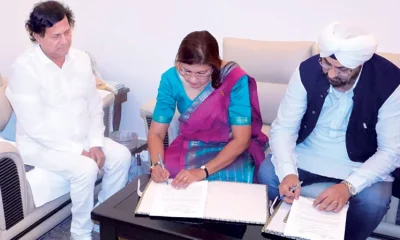
 News7 days ago
News7 days agoIChemC signs MoU with KIIT, India









